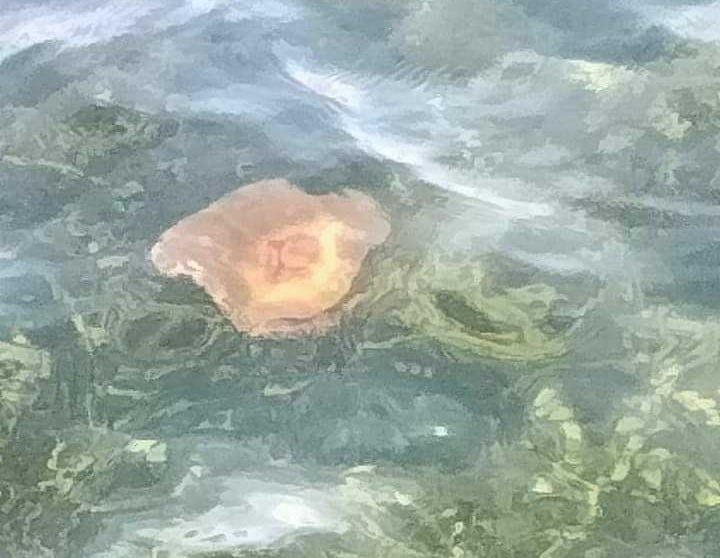Quote: ‘Fried egg jellyfish go through a polyp phase that attaches to the seafloor, where they can remain for decades’
By Staff reporter in Los Alcázares
AS October crept upon us and the summer became a distant memory the hot temperatures in the first week saw pods of bathers along the Mar Menor. Below the waters ‘Fried Egg’ jellyfish remain in situ.
Scientifically named Cotylorhiza tuberculata, the fried egg jellyfish are nowhere near the highest concentration detected in the central-northern area of the lagoon this summer. At that time there was little recorded in the southern area.
The Government of Murcia took safety measures on the evolution of jellyfish with certain municipalities, including Los Alcázares, requesting installation of nets to protect the beaches.
Booms remain present in Los Alcázares, where fried egg jellyfish are currently present.
Environmentalists have advised against the use of nets – citing accumulation of other organisms that increase algae growth, reduce water exchange, and potentially impact water quality for swimming.
Handling the nets could also affect delicate species, including seahorses.
The Mar Menor has been severely hit with eutrophication problems within its waters, with high levels of nitrates from fertilisers entering into the lagoon from the agricultural sector, and others.
This has led to significant fish and crustacean mortality, due to decreased/insufficient oxygen levels in the water, first noted when the lagoon was a green ‘soup’ in 2016.
Higher the nitrate levels, the more food is available for the fried egg jellyfish, that require certain algae that live within the jellyfish, that need a certain level of water transparency to carry out photosynthesis.
Pollution in the Mar Menor lagoon has been highlighted in recent times, that left swarms of jellyfish and species of fish dead on the shores. An outcry followed.
A walk along the shores of Los Alcázares can see an improvement of the water, with work continuing to clean up the algae.
Nitrate influx filtered through the Albujón riverbed, being a recurring issue, that was dubbed ‘the cancer of Mar Menor’.
The flow was 208 litres per second – there shouldn’t be any inflow – with the riverbed entering into a river, fed by the drainage networks of Campo de Cartagena’s farms.
It was reported in July the chlorophyll level was 0.35 milligrams per litre, the lowest value since 2016, when the lagoon experienced a collapse.
The improvement in water quality is due to meteorological factors, including less rainfall, resulting in reduced water inflow to the lagoon carrying nitrogen from fertilisers.
In 2022, the Mar Menor received 6 cubic hectometers of water. In 2023, it dropped to 2.7.
Also, in 2022, there was a lot of rain in March and April, especially near the Mar Menor. This year, water fell in May, in the upper part of the basin, so the volume reaching the lagoon is smaller, said the director of the advisory committee.
Josep María Gili, a research professor at CSIC, has been studying jellyfish for over four decades and says the return of the fried egg jellyfish is a positive sign for Mar Menor.
“If there are no jellyfish, it means the conditions are so disastrous that even they cannot survive,” he said.
The Mar Menor used to have a stable population of jellyfish in summer and another in winter, the Aurelia aurita, which dies before the warmer months. “The fried egg jellyfish, like other coastal jellyfish, goes through a polyp phase that attaches to the seafloor, where they can remain for decades, if not consumed,” said Josep.
“The jellyfish emerging are offspring of those polyps, which perhaps did not prosper, due to the lagoon’s poor conditions.
“Fifteen years ago, we removed around 2,000 tons of this species from Mar Menor using fishermen’s nets,” he added.
As bathers bobbed in the lagoon this October they are not in any real danger of the fried egg jellyfish, that has a low level of toxicity. They cannot cause irritation and burning in the affected skin.
The Ministry of Ecological Transition advise, in the event of a bite, to wash the affected area with seawater, not with fresh water, ammonia, vinegar or urine.





